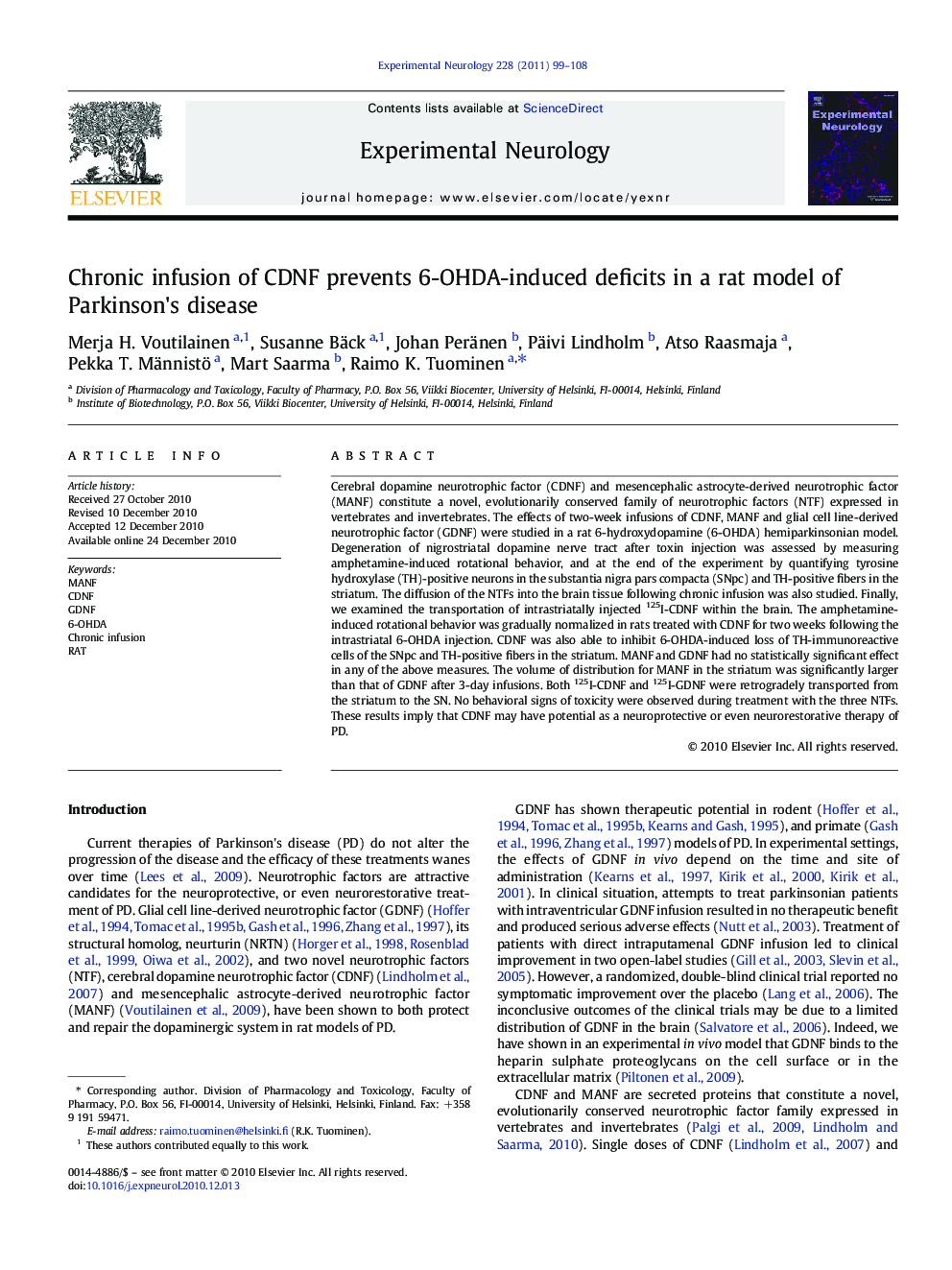| Article ID | Journal | Published Year | Pages | File Type |
|---|---|---|---|---|
| 3055922 | Experimental Neurology | 2011 | 10 Pages |
Cerebral dopamine neurotrophic factor (CDNF) and mesencephalic astrocyte-derived neurotrophic factor (MANF) constitute a novel, evolutionarily conserved family of neurotrophic factors (NTF) expressed in vertebrates and invertebrates. The effects of two-week infusions of CDNF, MANF and glial cell line-derived neurotrophic factor (GDNF) were studied in a rat 6-hydroxydopamine (6-OHDA) hemiparkinsonian model. Degeneration of nigrostriatal dopamine nerve tract after toxin injection was assessed by measuring amphetamine-induced rotational behavior, and at the end of the experiment by quantifying tyrosine hydroxylase (TH)-positive neurons in the substantia nigra pars compacta (SNpc) and TH-positive fibers in the striatum. The diffusion of the NTFs into the brain tissue following chronic infusion was also studied. Finally, we examined the transportation of intrastriatally injected 125I-CDNF within the brain. The amphetamine-induced rotational behavior was gradually normalized in rats treated with CDNF for two weeks following the intrastriatal 6-OHDA injection. CDNF was also able to inhibit 6-OHDA-induced loss of TH-immunoreactive cells of the SNpc and TH-positive fibers in the striatum. MANF and GDNF had no statistically significant effect in any of the above measures. The volume of distribution for MANF in the striatum was significantly larger than that of GDNF after 3-day infusions. Both 125I-CDNF and 125I-GDNF were retrogradely transported from the striatum to the SN. No behavioral signs of toxicity were observed during treatment with the three NTFs. These results imply that CDNF may have potential as a neuroprotective or even neurorestorative therapy of PD.
Research Highlights► CDNF normalized amphetamine-induced turning behavior of 6-OHDA lesioned rats ► CDNF prevented 6-OHDA-induced degeneration of nigrostriatal TH-positive neurons ► MANF was penetrating the brain tissue significantly better than GDNF ► CDNF has therapeutic potential in the treatment of Parkinson's diseases
